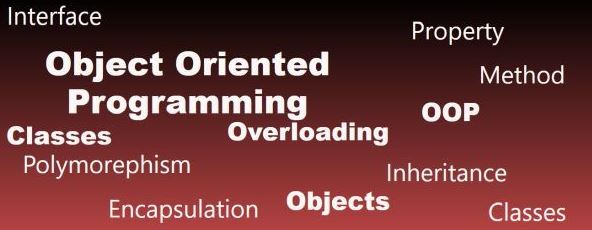Method of Requirements Modelling and Elicitation For Business Applications
Object Oriented Methods For Business Applications Dissertation – The project aim is to formulate an approach by integrating methods that have been tested and proven. It is aimed at concatenating the benefits from each method to optimise the best values each provides. This project is bounded by limited time and restricted access to resources (environment, stakeholders and existing systems). It is not intended to capture quantitative data or observe dynamic changes to variables due to circumstances.
The most appropriate method is the case study approach. This approach allows the researcher to deduce and evaluate the research outcome without intervening with organisation activity directly. Requirement modelling plays an important role in software development. Software development is not merely a social topic but a technological challenge. The continuous changes of system requirements cause many difficulties and costly errors trough out the whole life cycle of a system and make most requirements modelling method useless. The requirement modelling has been done in various stages. This dissertation has covered not only requirement modelling but also various aspects of software engineering as well as requirement elicitation.
The requirement specification is a backbone of the modelling. The requirements elicitation is the core part of the requirement engineering in software development. Various philosophical and business ideas can be used to make it successful. Ontological approach has been used to overcome the problem of capturing Interviewing technique has been focused on first phase. Object oriented approach has been used to solve the business problem. Use Case modelling is one of the important modelling technique, which has been used because it specifies all the different ways to use the system.
Object oriented design has been selected for the designing due to encapsulation, cohesive approach for the system. Class diagram has played an important role in the creation of system with the qualities of association and aggregation, which not only maintains the integrity of data but also sustains the basic structure of all the application. The well-structured Link List in C++ has been used for the prototyping due to dynamic data integrity. Critical appraisal has been carried out for the future research and critical evaluation of the techniques used.
- 25,000 words – 230 pages in length
- Excellent use of case sequence diagrams
- Well written throughout
- Good in depth analysis
- Includes C++ code
- Ideal for IT students
1. Introduction
Project Aim
Project Hypothesis
Project Objectives
Research Approach
Dissertation Structure
2. Software Engineering
Purpose of Software Engineering
Motivation for Software Engineering
The Beginning
The Different Stages in Software Engineering
Requirements Specification
Design and Implementation
Testing, Validation and Verification
3. Methodologies, Tools, and Techniques
Rapid Application Development
History of RAD
Advantage of RAD
Disadvantages of RAD
Multiview
Five stages in Multiview
Soft System Methodology
Stages in SSM
Advantage of SSM
SSADM Structured Systems Analysis and Design Method
History of SSADM
Stages in SSADM
Disadvantage of SSM
Object Oriented
Object Oriented Methods
Other Object Oriented Methods
Notation
Advantage of O-O
Disadvantages of O-O
The Jackson Structured Design (JSD)
The JSD steps
Advantage of JSD
Disadvantage of JSD
Semiotics
Semiotics Framework
Normbase – Ontological Charting Tool: Prototype Version
Advantages of Semiotics
Disadvantages of Semiotics
UML
History of UML
Stages in UML
Use-Case View
Structural (Logical or Static) View
Behavioural (Process, Concurrent, Collaborative, or Dynamic) View
Implementation (Component or Development)
Environment (Deployment or Physical)
Selected Methodology
4. Requirements Specification
The Goal of a Requirement Specification
Challenges when Specifying Requirements
Requirements Analysis and Specifications of Case Study
5. Requirements Elicitation
Definitions
Requirements Elicitation
Problems in Requirements Elicitation
Difficulties of Elicitation
Elicitation Techniques
Traditional Approaches
Group Elicitation
Representation-based Approaches
Contextual (Social) Approaches
Cognitive Approaches
Expressive Power Goal-based Approaches
Goal-based Approaches
Knowledge Acquisition
Background Reading
Advantages of Background Reading
Disadvantages
Interviews
Types of Interviews
Interviewing Essentials
Interview Steps
Opening and Closing and Following Up the Interview
Conducting the Interview: Five Easy Steps
Advantages
Appropriate Situations
Disadvantages
Scenarios
Advantages
Disadvantages
Task Models & Scenarios
Implementation of Business Application with Scenario
Library Case
Scenario
6. Requirements Modelling
Requirements Modelling
Types of Model
Object Oriented Information Engineering
7. Qualities of OO Modelling
What Makes an OO Model Good?
Characteristics of OO Model
Size
Complexity
Coupling
Description
Sufficiency
Completeness
Cohesion
Primitiveness
Fragility
Immobility
Achieving Quality Model
Class Diagrams
Perspectives
Associations, Attributes and Aggregation
Generalization
Constraint Rules
When to Use Them
8. Use Case Modelling
Use Cases
Actors
Actors Categories
Actor Personalities
System Boundary
Stakeholders and their Concerns
Scenarios
What are they? How do they relate to use cases?
Use Case
Use Case Description
Granularity of Use Cases
Summary Level Use Cases:
User-goal Level Use Cases
Scope of Use Cases
Task 1: Actors
Process. Stakeholders
Process. Use Case Outlines
Process. Use Case Bodies
Process. UC Structuring
Process. Checks
Check List
Use Cases as a Goal-based Approach
Use Cases in UML
Use Case Model
Relationships Between Use Case
Includes Relationship
Generalization Relationship
Extend Relationship
Ten Use Case Pitfalls
9. Critical appraisal and Conclusion
Critical Appraisal
Critical evaluation
Achievements of the objectives
Strengths of the Projects
Weaknesses
Personal Reflection on this Project
Future Research for the Project
Conclusions
References
Appendix Section

